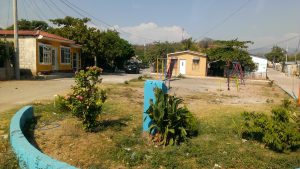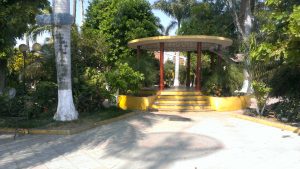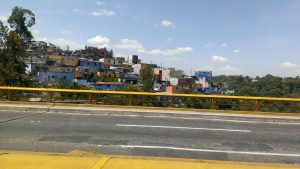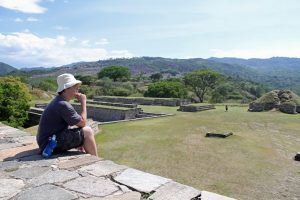
The Conditions for Happiness
What makes you happy? During the two weeks that I spent abroad in Guatemala studying how neighborhood conditions influence the happiness of residents, this question was asked many times. The question was not only posed to me and my fellow ASU classmates but also to the many Guatemalans that we met in our travels. Unsurprisingly, there were many different answers. However, listening closely to what the Guatemalans were saying revealed a common thread within many of their responses. To my surprise, this frequent source of happiness seemed to occur regardless of physical neighborhood conditions.

When asked about the sources of their happiness, we heard person after person speak not of their physical conditions or possessions, but of their family, their friends, how their community supports them, and how they support their community. It was the Guatemalans’ social connections, the bonds which they shared with the people around them that brought them happiness, despite whatever difficulties they happened to be facing from day to day. Hearing this over and over again made me wonder: Does this mean that neighborhood happiness is ultimately determined by a neighborhood’s social conditions and that physical conditions don’t really matter?

Thinking back to the neighborhoods I visited in Guatemala, in terms of providing safety and comfort, the physical conditions of many neighborhoods were lacking. However, in terms of providing opportunities for social interaction, the conditions of many neighborhoods were actually quite good. Many homes are set with their front doors right along the street, making it easy to strike up conversations with passersby. Beautiful centrally located public squares and community washbasins, which are also often sites for public markets, are common and acted as wonderful places for social gathering and relaxation. The limited number of cars means that most people walk to where they need to go and frequently encounter each other while walking, and when they do drive, it is often as a carpool of many. All of these physical aspects come together to facilitate strong social connections.
 Now when I look at Tempe neighborhoods, I often think about how they compare with those in Guatemala. While Tempe neighborhoods almost universally have safer and more comfortable physical conditions than the neighborhoods I saw in Guatemala, when I look at them in terms of providing opportunities for social interactions, I realize they fall short in many ways. Houses are often set back behind large front yards, separating people’s front doors from passersby. While parks are common in Tempe, they don’t have markets or community washbasins to act as impetus for residents to visit on a daily basis. The prevalence of cars mean that people usually travel by car alone, often not encountering anyone they know while they are out. Seeing these conditions, I am not surprised when I often hear many unhappy Tempe residents talk about how they don’t know their neighbors and feel socially disconnected from their neighborhood community.
Now when I look at Tempe neighborhoods, I often think about how they compare with those in Guatemala. While Tempe neighborhoods almost universally have safer and more comfortable physical conditions than the neighborhoods I saw in Guatemala, when I look at them in terms of providing opportunities for social interactions, I realize they fall short in many ways. Houses are often set back behind large front yards, separating people’s front doors from passersby. While parks are common in Tempe, they don’t have markets or community washbasins to act as impetus for residents to visit on a daily basis. The prevalence of cars mean that people usually travel by car alone, often not encountering anyone they know while they are out. Seeing these conditions, I am not surprised when I often hear many unhappy Tempe residents talk about how they don’t know their neighbors and feel socially disconnected from their neighborhood community.
 The lessons that I learned in Guatemala, and continue to learn here at ASU and in Tempe neighborhoods, have been truly invaluable. The experiences and knowledge I have gained has broadened my perspective and has opened a new pathway in my academic and professional interests, and maybe even my career. It is my intention to continue learning about neighborhoods and happiness, with the hope that I can help enable happiness for many, including myself. And thanks to my Guatemalan experiences, I have an idea of where to start.
The lessons that I learned in Guatemala, and continue to learn here at ASU and in Tempe neighborhoods, have been truly invaluable. The experiences and knowledge I have gained has broadened my perspective and has opened a new pathway in my academic and professional interests, and maybe even my career. It is my intention to continue learning about neighborhoods and happiness, with the hope that I can help enable happiness for many, including myself. And thanks to my Guatemalan experiences, I have an idea of where to start.

